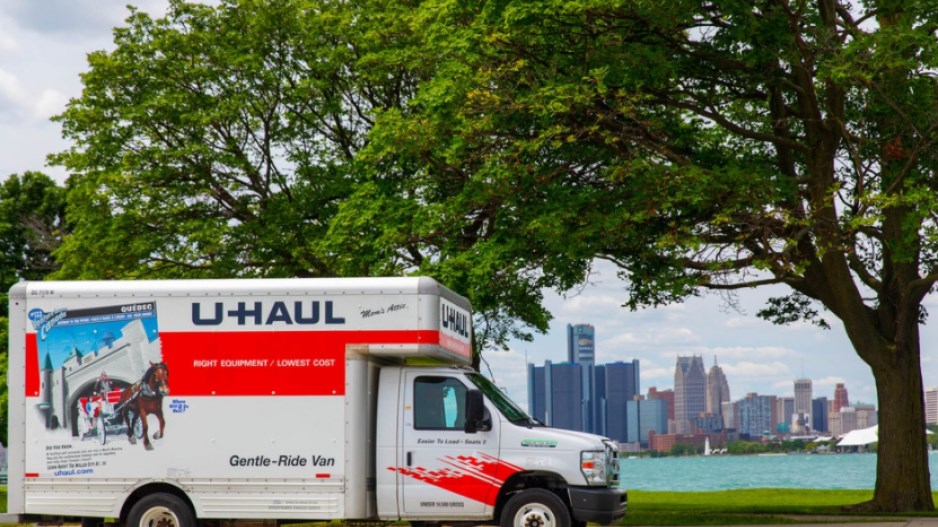British Columbia was the No.1 place to move to in Canada in 2020, according to data released by U-Haul Canada analyzing internal migration patterns across the country.
U-Haul movements are generally considered a key metric for middle-class household migration. In contrast, the wealthy typically hire moving companies, and lower-income people use friends and a borrowed truck.
The data, ranked by the net gain of one-way U-Haul moving vans, includes a compilation of more than two million trips across Canada and the U.S.
Alberta was ranked No. 3 as a U-Haul destination in 2020, up from No. 4 a year earlier, while Saskatchewan came in at No. 8, down one point from a year earlier. Manitoba was ranked No. 9, down from a No. 8 placement in 2019.
“While U-Haul migration trends do not correlate directly to population or economic growth, the company's growth data is an effective gauge of how well cities are attracting and maintaining residents,” said U-Haul spokesperson Jeff Lockridge.
B.C. destinations with the highest spikes in net-incoming traffic included North Vancouver, which was No. 2 across the country, and Vancouver, which came as No. 7.
U-Haul’s migration data registers the destinations of do-it-yourself movers based on where they drop off their vehicle.
In Coquitlam, incoming and outgoing U-Haul traffic was split 50-50, which marks a 1% bump in arrivals and a 6% decline in departures over 2019.
Next door in Port Coquitlam, 52.9% of all one-way U-Haul traffic came from arrivals. Overall U-Haul traffic dipped significantly in the city, with traffic from arrivals and departures each dropping 20%.
Top growth cities
Across Canada, the city of North Bay, Ont. — with a population of 53,000 residents — topped all other one-way destinations in net inbound traffic, registering a 20% uptick in 2020.
Other major spikes in incoming U-Haul traffic were reported in Nanaimo/Coombs on Vancouver Island (up 52%), Chilliwack (32% increase ), Abbotsford (up 26%) and Vancouver with a 16% increase.
Airdrie, Alberta, was the only Prairie city ranked among the top 25 destinations, ranked at No. 19.
Overall, B.C. saw a 3.3% increase in arrivals in 2020, whereas departures rose 2.6%. Only New Brunswick matched the number of net arrivals in B.C., bouncing back from a net loss in 2019 to register 22.7% more arrivals year-over-year.
B.C.’s popularity among do-it-yourself movers is echoed by the latest population data released by Statistics Canada.
From July to September, inter-provincial migration sunk 21% compared to the same period in 2019.
Over that same period, Canada’s population growth slowed to near 0% growth, creeping up by only 2,767 people in the slowest quarterly growth rate since the end of the Second World War.
The culprit? COVID-19, said Statistics Canada last month, which in its latest tally said population growth has "essentially stopped.”
The biggest population declines came from fallout due to international travel restrictions meant to curb the transmission of the coronavirus.
Despite posting the highest net population gain (4,742 more people) from inter-provincial migration, British Columbia posted the largest declines over the three months, down 1,861 people between July and October.




